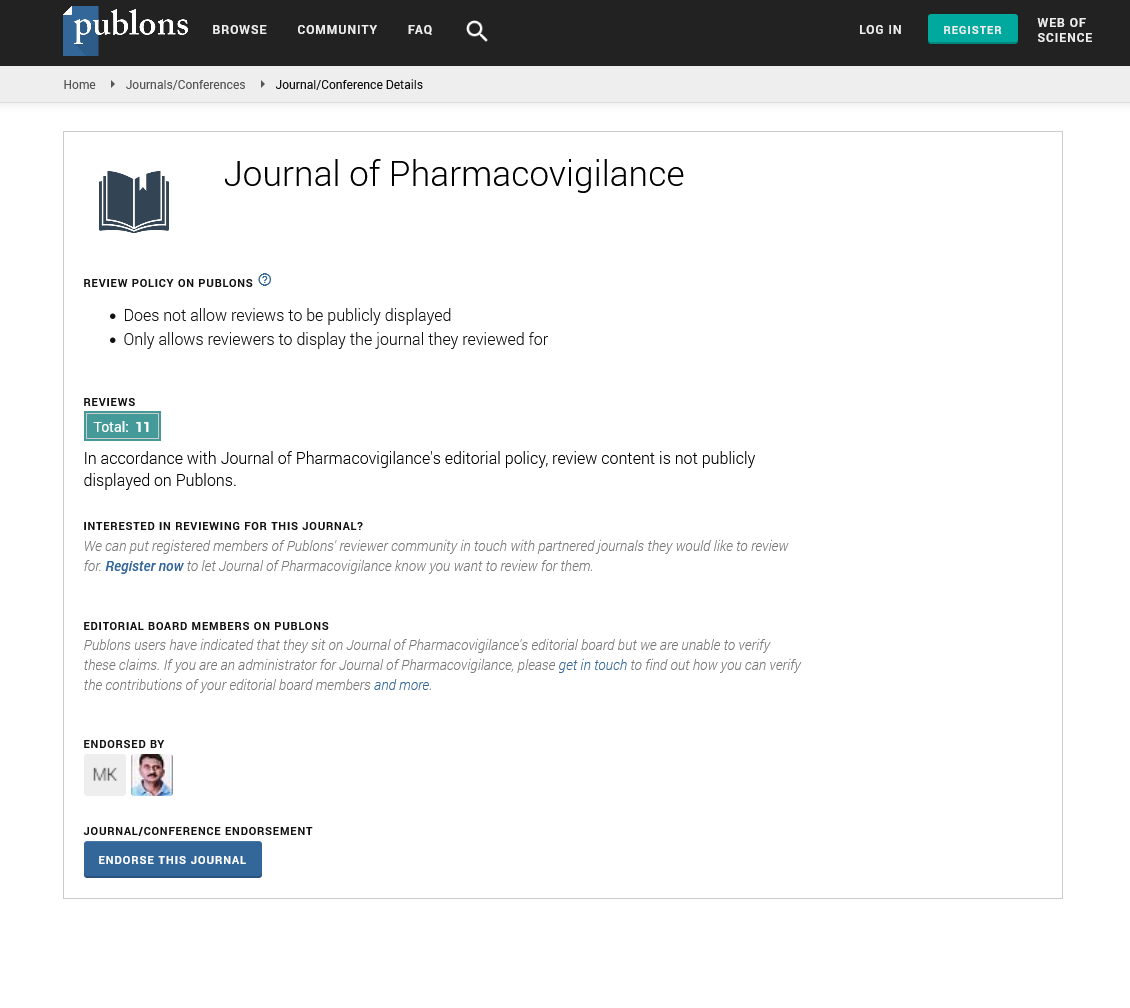Indexed In
- Open J Gate
- JournalTOCs
- The Global Impact Factor (GIF)
- RefSeek
- Hamdard University
- EBSCO A-Z
- OCLC- WorldCat
- Publons
- Euro Pub
- Google Scholar
Useful Links
Share This Page
Journal Flyer

Open Access Journals
- Agri and Aquaculture
- Biochemistry
- Bioinformatics & Systems Biology
- Business & Management
- Chemistry
- Clinical Sciences
- Engineering
- Food & Nutrition
- General Science
- Genetics & Molecular Biology
- Immunology & Microbiology
- Medical Sciences
- Neuroscience & Psychology
- Nursing & Health Care
- Pharmaceutical Sciences
Challenges in pharmacovigilance of vaccines in clinical trials and risk management strategies
11th International Conference and Exhibition on Pharmacovigilance & Drug Safety
June 21-22, 2018 | London, UK
Subodh Bhardwaj
New York & Inventprise, USA
Keynote: J Pharmacovigil
Abstract:
The global vaccine market size will touch 48 billion USD by 2025. With 15 new introductions this century millions of children
and adults are being immunised globally. Research on new vaccines for HIV, Ebola, Zika, Dengue, Universal Influenza
vaccines and yellow fever are in the pipeline. New manufacturing technologies, new routes of administration, advances in
genomics, emerging disease pandemics & outbreaks, innovation and demand from emerging economies makes the vaccine
segment profitable. Support from WHO, UNICEF, GAVI and Gates foundation has stirred new vaccine introductions in Asia,
Africa e.g. Meningococcal, Pneumococcal vaccines. Vaccines have a high generic barrier and potential to generate blockbuster
sales e.g. Shingrix. Vaccines differ from drugs as they are preventive while drugs are curative. Increased demand has necessitated
increasingly stringent safety requirements during preclinical, clinical and post licensure thereby making vaccine vigilance and risk
mitigation more precise to be able to pre-empt detection, assessment, analysis and prevention of new SAEs or SUSARs, to make
vaccine recipients safe. The author discusses case reports to reinforce effective methods and outcomes. The immunization and
pharmacovigilance gap needs to be addressed globally as 50% of 20.8 million unvaccinated children are from South Asia & Africa
with poor PV facilities. Though 20.4 million deaths have been prevented by Measles vaccine from 2000-2016, yet 254 children die
each day! It costs only 2 USD to protect a child against Measles, rubella in developing countries. There is need for enlarging the
pharmacovigilance perspective with better understanding of vaccine components, linkage to clinical trials, increased awareness,
PV concepts, pitfalls- as a child receives 37 shots from birth through 6 years of age & vaccine safety has a very narrow margin for
error.
Publications:
1. Bhardwaj S (2018) Vaccines in Pharmaceutical Medicine & Translational clinical research Eds: Divya Vohora and
Gursharan Singh, chapter21,341-353, Elsevier.
2. Bhardwaj S (2015) Vaccine vigilance-Towards strengthening Pharmaco-vigilance. J Pharmacovigilance 3:4,56.
3. Sharma HJ, Bhardwaj S et al (2010) No demonstrable association between Leningrad- Zagreb mumps strain and aseptic
meningitis in a large clinical trial in Egypt. Clini Microbiol Infect 16, No4.
4. Sharma HJ, Multani AS, Bhardwaj S et al (2009) Safety and Immunogenicity of diptheria-tetanus-pertussis vaccine and
hepatitis B vaccine as a new tetravalent combination (DTwP/HB) administered alone and at separate site (DTwP&HB)
including comparison with standard commercially available combination vaccine in Indian Infants 6-14 weeks of age.
Human Vaccines 5:5,310-14.
5. Bhardwaj S, Gupta V, Gupta A et al (2009) Safety and immunogenicity of tetanus toxoid in pregnant women. J Obstet
Gynecol India,59, No 3,214-19,2009.
6. Sudarshan MK, Bhardwaj S, Mahendra BJ et al (2008) An immunogenicity, safety and post marketing surveillance of a
novel adsorbed human diploid cell rabies vaccine. Human Vaccines 4:4,275-79

